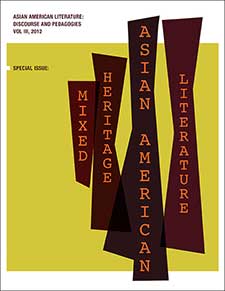Transforming Three Sisters: A Hapa Family in Chekhov’s Modern ClassicPosted in Articles, Asian Diaspora, Literary/Artistic Criticism, Media Archive on 2014-12-08 04:01Z by Steven |
Transforming Three Sisters: A Hapa Family in Chekhov’s Modern Classic
Asian American Literature: Discourses and Pedagogies
Volume 3 (2012): Special Issue: Mixed Heritage Asian American Literature
pages 130-146
Elizabeth Liang
“All right, let’s agree that this town is backward and vulgar, and let’s suppose now that out of all its thousands of inhabitants there are only three people like you… But you won’t simply disappear; you will have some influence. And after you’ve gone there will be six more, let’s say, like you, then twelve, and so on, until finally people like you will be in the majority. In two or three hundred years, life on earth will be unimaginably beautiful, astonishing.” (Vershinin in Act I of Three Sisters by Anton Chekhov, translated by Paul Schmidt)
It is an act of courage or foolhardiness to produce theatre in the heart of the film world, depending on your point of view and how large the houses turn out to be. In the fall of 2005, I produced Three Sisters in a 60-seat theatre in Burbank, California (home of Disney and Warner Brothers). The odds were stacked even higher against the show’s success when my assistant producer and I stipulated that the main characters, the upper-class and highly educated Russian Prozorov siblings, had to be played by Hapa actors. I chose to foreground mixed heritage Asians because I am Hapa and wanted to see something akin to my own family on stage. The play had never been cast this way anywhere according to my research. Meanwhile, I assumed that our audience would be largely European American, because that is usually the case whenever I attend the theatre. Thus it was difficult to predict if this production would spark any interest in the average L.A. theatregoer, since people tend to flock toward stories to which they can relate. I hoped that they would be intrigued by our unusual “take” on a play with which they were likely familiar (as it is one of Chekhov’s most popular works), but I also worried that they would feel the ethnic “layering” was forced and unnatural, or that we were trying to teach them something they had no interest in learning. My reasons for casting the siblings as Hapa were manifold:
- To deliberately represent a section of the population that is normally under- and misrepresented. Census 2000 proved that over 6.8 million or 2.4 percent of Americans considered themselves multi-ethnic. 25 percent of those people resided in California. (And Census 2010 discovered that over 9 million or 2.9 percent of Americans considered themselves to belong to two or more racial groups. Among those, Asian and white are the third most common pairing.)
- To allow the actors to interpret legendary roles in which they might not normally get cast.
- To further emphasize the difference of the Prozorov family from others by adding race to Chekhov’s division based on class and education.
- To tell the audience a mixed heritage story without making it feel like a classroom lesson…
Read the entire article here.
